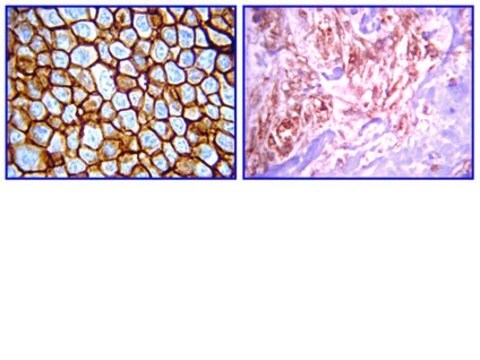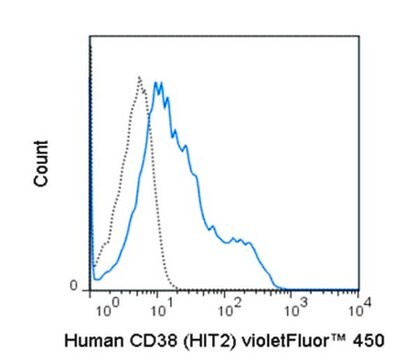ABE2626M
Anti-PASD1
from rabbit
Sinónimos:
Circadian clock protein PASD1, Cancer/testis antigen 63, CT63, OX-TES 11, PAS domain-containing protein 1
About This Item
Productos recomendados
biological source
rabbit
Quality Level
antibody form
affinity isolated antibody
antibody product type
primary antibodies
clone
polyclonal
species reactivity
human
packaging
antibody small pack of 25 μg
technique(s)
immunoprecipitation (IP): suitable
western blot: suitable
isotype
IgG
NCBI accession no.
UniProt accession no.
target post-translational modification
unmodified
Gene Information
human ... PASD1(139135)
General description
Specificity
Immunogen
Application
Epigenetics & Nuclear Function
Immunoprecipitation Analysis: 5 ug from a representative lot immunoprecipitated PASD1 in 500 µg of SW480 lysate.
Western Blotting Analysis: A representative lot detected PASD1 in HEK293T transfected myc-his Tagged PASD1 lysate V2 isoform (Courtesy of Dr Carrie Partch at University of California Santa Cruz).
Immunoprecipitation Analysis: A representative lot detected PASD1 in H1299 & SW480 cells (Courtesy of Dr Carrie Partch at University of California Santa Cruz).
Immunoprecipitation Analysis: A representative lot detected PASD1 in H1299 and SW480 cell lysates (Michael, A.K., et. al. (2015). Mol Cell. 58(5):743-54).
Quality
Western Blotting Analysis: 0.2 µg/mL of this antibody detected PASD1 in lysate from HEK293T cells transfected myc-His Tagged PASD1, isoform 1, version2.
Target description
Physical form
Storage and Stability
Other Notes
Disclaimer
¿No encuentra el producto adecuado?
Pruebe nuestro Herramienta de selección de productos.
Storage Class
12 - Non Combustible Liquids
wgk_germany
WGK 1
Certificados de análisis (COA)
Busque Certificados de análisis (COA) introduciendo el número de lote del producto. Los números de lote se encuentran en la etiqueta del producto después de las palabras «Lot» o «Batch»
¿Ya tiene este producto?
Encuentre la documentación para los productos que ha comprado recientemente en la Biblioteca de documentos.
Nuestro equipo de científicos tiene experiencia en todas las áreas de investigación: Ciencias de la vida, Ciencia de los materiales, Síntesis química, Cromatografía, Analítica y muchas otras.
Póngase en contacto con el Servicio técnico







